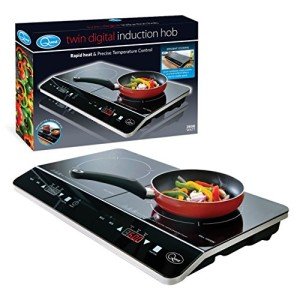Induction Hob Guide: A Comprehensive Overview
Induction hobs have actually emerged as a popular option for modern kitchens, changing the way individuals cook. This guide will provide an extensive appearance at what induction hobs are, how they work, their advantages and disadvantages, and considerations when buying one.
What is an Induction Hob?
An induction hob is a kind of cooktop that utilizes electromagnetic energy to heat pots and pans straight, rather than cooking through a flame or by heating the surface of the cooktop. This technology is becoming significantly popular within both domestic and industrial cooking areas due to its performance and security features.
How Does an Induction Hob Work?
The concept behind induction cooking relies on electromagnetic induction. Here's how it works:
- Electromagnetic Field: When the induction hob is switched on, it generates an electromagnetic field beneath the cooktop surface.
- Product Response: If a ferrous (magnetic) material pot or pan is put on the hob, the electromagnetic field induces currents in the pots and pans.
- Heat Generation: These caused currents produce heat directly in the pot or pan, preparing the food inside. The hob surface area remains cool to the touch since it is not being heated straight.
Advantages of Using an Induction Hob
Induction hobs feature a multitude of benefits:
- Energy Efficiency: Induction cooking is highly effective as nearly all the energy produced is transferred directly to the pot or pan, leading to quicker cooking times.
- Safety: The surface area of the induction hob stays cooler, reducing the risk of burns. Furthermore, a fantastic read shut off instantly when cookware is eliminated.
- Exact Temperature Control: Users can quickly adjust the heat settings, providing better control over cooking temperature levels.
- Easy to Clean: Because the induction hob itself does not get exceedingly hot, spills are less likely to burn onto the surface area, making cleaning up a breeze.
- Modern Aesthetics: Induction hobs normally are available in sleek, flat styles that fit well in modern cooking areas, enhancing the total visual.
Downsides of Induction Hobs
While there are numerous advantages, it is also essential to consider some drawbacks:
- Cost: Induction hobs are frequently more pricey than conventional gas or electric cooktops.
- Pots and pans Compatibility: Specialized cookware is required; just ferrous cookware will work with induction hobs, meaning some pots and pans may need to be replaced.
- Sound: Some users report a buzzing or humming noise when using induction cooking, particularly at high settings.
- Power Limitations: Induction hobs may require specific electrical setups and can not be used with basic outlets if they have high power requirements.
Secret Features to Consider When Buying an Induction Hob
When considering acquiring an induction hob, it's crucial to assess numerous factors to guarantee you make the very best option for your kitchen.
| Function | Description |
|---|---|
| Size | Select a design that fits your cooking area space and satisfies cooking needs (2-5 burners). |
| Power Output | Search for higher wattage for quicker heating but ensure compatibility with your power supply. |
| Control Type | Decide between touch controls or knobs, based upon your preference for ease of use. |
| Safety Features | Inspect for automatic shut-off, kid locks, and residual heat indicators. |
| Style | Pick a style that matches your cooking area decor-- consider a built-in versus a counter top. |
| Warranty | Validate the warranty provided-- longer warranties suggest much better product assurance. |
FAQ
Can I utilize any pot or pan on an induction hob?
No, just pots and pans made from ferrous metals, such as cast iron or some stainless steel, will work on induction hobs. Aluminum, glass, and copper cookware are not suitable unless they have a magnetic base.
How does induction cooking impact cooking times?
Induction cooking is normally faster than gas or electrical cooking, as it directly heats up the pots and pans and not the cooktop. Many users report substantial time savings when boiling water or cooking meals.
Is induction cooking safe for kids?
Yes, induction hobs are considered safe for kids. The primary surface remains cool, and the hob automatically changes off when cookware is gotten rid of, reducing the risk of burns or fire.
Do induction hobs require unique electrical setups?
Some induction hobs might require a devoted electric outlet in order to operate properly, particularly those with higher power output. It is vital to seek advice from an electrical expert if you are unsure.
Induction hobs represent a considerable development in cooking innovation, delivering effectiveness, speed, and security advantages over standard cooking approaches. While there are factors to consider to remember, such as expense and cookware compatibility, the benefits can exceed the drawbacks for many users. As home cooking continues to evolve, induction hobs are sure to be at the forefront of modern culinary innovation.
Whether you are a cooking beginner or an experienced chef, understanding how induction hobs work and what to look for when buying one can significantly boost your cooking experience. By weighing the advantages versus the downsides and considering your specific requirements, you can make an informed decision that will raise your cooking to brand-new heights.

